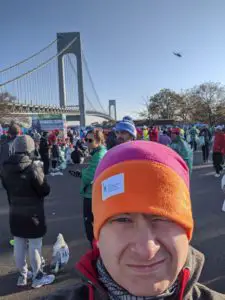If you’re a runner diagnosed with metatarsalgia. The ball of your foot is painful as a result of the highly repetitive impact on your feet from pounding the streets.
You cant exercise your way out of it but you can plan your return to running.
A good pair of running shoes with plenty of cushioning and support is the ideal. Along with a considered return and couple of tactics to help avoid a recurrence.
This guide will help you buy the best running shoes for metatarsalgia for you and touch on a couple of tactics to help your return.
Table of Contents
Buyers Guide
Don’t buy the cheapest shoes. If you’re new to running or coming back to it after metatarsalgia. Buying the cheapest shoes will lead to problems.
They don’t have the best cushioning. Good cushioning is one of the characteristics your should be looking for in a running shoe to avoid the return of metatarsalgia.
Comfort
Comfort should always be at the top of the list of characteristics for running shoes. Especially so for those who have suffered with metatarsalgia in the past. Comfortable running shoes fit well, feel secure and make you feel like a runner.
But for some outliers most runners who have had metatarsalgia and returned to running say cushioning is king.
Poorly fitting running shoes alone wont cause metatarsalgia but they can certainly be a contributing factor. They don’t give your feet the support and protection they need to help avoid the onset of another case of metatarsalgia.
Free The Toes
Giving your toes and forefoot the space to spread out in the toe box will help avoid painful bunching. The foot is a complex bit of kit and not allowing it the space it needs to relax will only put it under pressure. That load is the last thing your feet need while you pound the streets.
Arch Support
Correct arch support chimes in neatly with the other points in this list. Good arch support means your foot doesn’t have to compensate for a void beneath the arch on every step.
Shoes with poor arch support will force your feet to take your weight on their own. They will get tired quicker and leave you prone to another case of metatarsalgia.
Orthotics
Orthotics can help with the return to running after metatarsalgia. Good custom or off the shelf orthotics can help with arch support and cushioning. Try some off the shelf ones first. The custom ones can be very expensive.
If you have high arches you may need the expensive custom type to give your feet the exact support they need. The off the shelf versions will add cushioning but not so much arch support.
If you feel you might need to install an orthotic in your running shoes get a pair that are a half to one size bigger than you would normally buy. You’ll need the space to get them and your feet in there.
Your Old Faithful Running Shoes
Don’t use them. They wont give you the cushioning and support your feet need.
What Causes Metatarsalgia
High impact repetitive use of your feet, running or any other sport.
Not taking the time to recover between runs is something we are all guilty of. A rest day is a wonderful thing and important if you’ve suffered from metatarsalgia in the past.
How’s your BMI? Logic dictates that the more weight you carry on your feet the more stress they are under.
Take a look at this excellent article if you need more information.
How Can It Be Avoided
Its unlikely you’ll be reading this if you’ve never had metatarsalgia. You’ve probably read much on the subject so I wont waffle on too much here. So here’s a quick summary of some common sense steps to avoid the return of metatarsalgia.
See a podiatrist
The condition can range in severity quite widely. If you had it bad you should see a podiatrist before returning to running. If you had a rough time with it, avoiding metatarsalgia coming back should be the A goal. At this point its less about a 10k pb and more about the future happy use of your feet for years to come.
Orthotics
I talked about orthotics in terms of running shoe selection. Worthy of mention again in terms of your return plan.
Time To Run!
Start slow and short. Don’t try to bash out a fast 10k. Run round the block and see how you feel after. Then see how you feel the next day. Give your feet time to recover and don’t run too much too soon.
I’m a great believer in keeping a log in a note book. Being able to look back over time at the runs you’ve done and how you felt will be invaluable should you be struck with metatarsalgia again.
Conclusion: Best Running Shoes For Metatarsalgia
Buy some new comfortable, well-fitting, cushioned running shoes and consider an orthotic.
Visit a podiatrist if you had it bad. You’ll be needing your feet for the rest of your life.
When you return to running, start running short and slow and keep detailed records.

Frequently Asked Questions
How do you treat metatarsalgia?
Try to keep weight off your feet as much as possible.
How long does metatarsalgia take to heal?
Depends on the severity you are experiencing. Unless its acute you should be back on your feet in 8 – 10 weeks.
Do I need to see a podiatrist if I think I have metatarsalgia?
It’s a very good idea to see a podiatrist.


